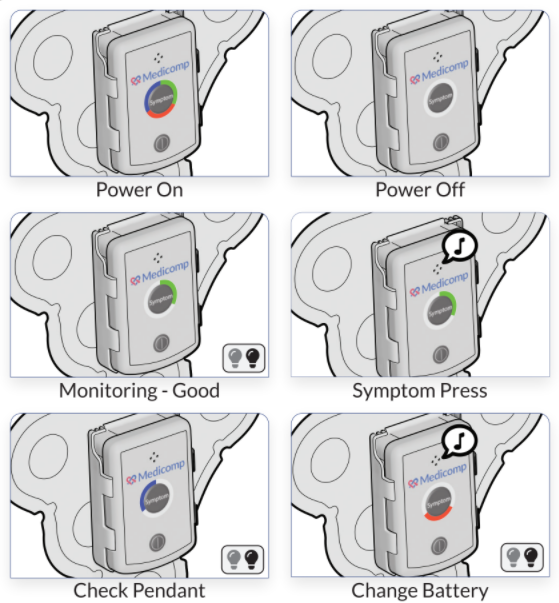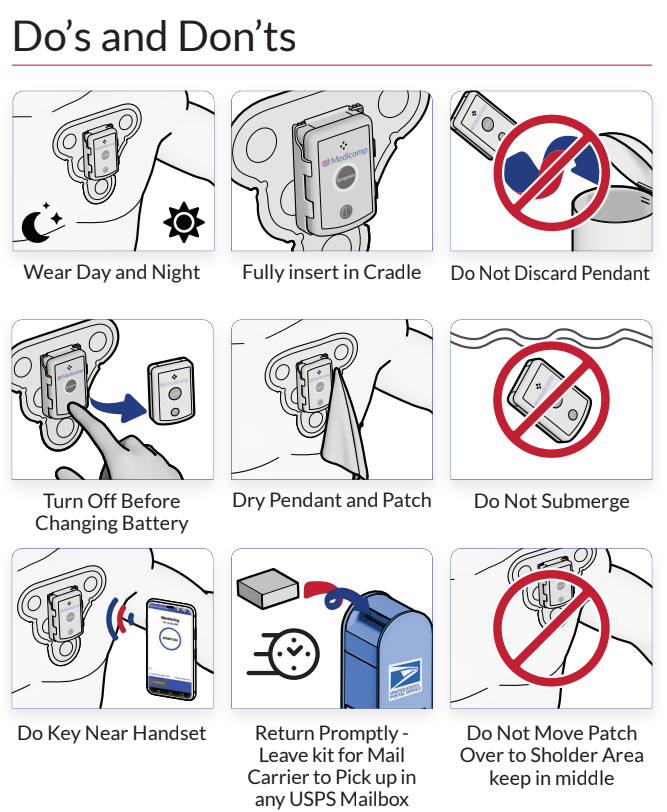If you have ever felt a jump or sudden stall in the rhythm of your heart, you may have experienced what is known as an arrhythmia. Millions of Americans experience these little hiccups every year with no harmful side effects. However, if you feel the symptoms of an arrhythmia often and for long periods of time, the arrhythmia may be an indication of a serious underlying heart problem.
To confirm the diagnosis of an arrhythmia, your doctor may have you use an ambulatory cardiac monitor, such as an event monitor or a Holter monitor. Event monitors and Holter monitors are small electronic devices that monitor and record the electrical activity in your heart through electrodes that are placed on your body. A Holter monitor is usually ordered by a cardiologist when a patient is experiencing symptoms frequently. A Holter monitor is for short-term monitoring, usually 24-48 hours. An event monitor may be ordered by a cardiologist when the patient experiences symptoms infrequently or may not feel any symptoms at all. An event monitor is for long-term monitoring, up to 30 days.
While the cardiac monitor is attached, you will go about your regular activities, and return the device to your doctor or the cardiac monitoring lab at the end of the procedure. The data taken from the monitor about when arrhythmias occur and where in the heart they are coming from can help your cardiologist diagnose and treat any problems.
While a patient is wearing an event or Holter monitor, here are a few important details to keep in mind to ensure the monitor gets a clear reading:
- Prepare Your Skin for the Electrodes: Proper preparation of the areas of your chest where the electrodes will attach is essential for good ECG recordings. Follow the instructions given to you at the doctor’s office or from the monitor’s user guide.
- Always Wear the Monitor: Wear the monitor and keep it turned on 24 hours a day, every day, for the entire length of your prescribed procedure, during all your normal daily activities except those that involve water. Do not get any part of the monitor wet.
- Record Activities in a Diary: This will help your doctor understand the activities surrounding the arrhythmia, which can lead to a diagnosis on what causes them. Some monitors have built-in verbal and manual diaries.
- Avoid Things that Create Interference: This includes magnets, microwaves, electric blankets, cell phones, and MP3 players.
- Follow Instructions: It’s very important to follow the instructions provided in the monitor’s user guide and from your doctor.
ReactDx specializes in providing customers with event and Holter monitors that make heart monitoring easy and accurate. Contact us today at 800-23-HEART to find out more about our ambulatory cardiac monitoring solutions that will help you live a healthier life. You can also browse our blog to learn more about the different kinds of cardiac monitors and how they help doctors diagnose arrhythmias.



